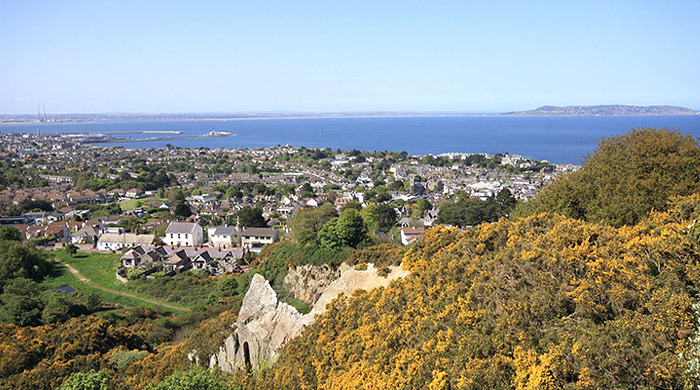Climate has always had a critical impact on humanity. Two studies have now used a combination of climate data and fossil finds to reconstruct how climate change determined early human migration. Accordingly, a severe cooling 1.1 million years ago ended the first colonization of Europe by Homo erectus. Using climate models from the past 400,000 years, the second study shows that the initially separate distribution areas of Neanderthals and Denisovans began to overlap due to warm phases – thus interbreeding between the two early human species became possible.
For decades, research into our early ancestors has focused on the fossil record of skeletal remains and artifacts. More recent research methods also include information about environmental conditions and can therefore reconstruct the conditions in which early hominins lived. Findings about past climatic changes enable conclusions to be drawn about areas where the combination of temperature and precipitation might have been suitable for early human life and where conditions led to the migration of early human settlers or even their extinction. Two studies now provide new insights into the history of hominins.
Climate data from deep sea wells
A team led by Vasiliki Margare of University College London reconstructed the temperature in southern Europe from 800,000 to 1.8 million years ago using a deep-sea sediment core taken off the coast of Portugal. “Europe’s oldest hominin remains were found on the Iberian Peninsula,” Margaery and her team explain. “Dating from 1.5 to 1.1 million years ago, it was previously assumed that hominin populations continued to exist once they were established.” However, in the period between 1.1 million years ago and 900,000 years ago fossils and artefacts. New search results now provide an explanation for this for the first time.
“Based on our analyzes of deep-sea sediment cores, we found that the climate during this period was not as mild as previously assumed, but that there were significant fluctuations,” the team says. “About 1.145 to 1.123 million years ago, there was a cold period comparable to the most severe event of the most recent ice age.” By analyzing the remains of pollen and microalgae in the sediment cores, Margaery and her team were able to draw conclusions about environmental conditions at the time. “Rivers and winds carry small pollen from nearby land to the ocean, where it sinks and accumulates in the deep sea,” explains Margaery. “According to our analysis of pollen from ocean sediments, the cooling of the North Atlantic has transformed the vegetation of western Europe into an inhospitable semi-desert region.” The sea surface temperature off Lisbon dropped to six degrees Celsius during this period.
The Ice Age wiped out the first European settlers
In order to assess the effects of cooling on the population of Homo erectus in the Iberian Peninsula at the time, the researchers fed the new data into a climate simulation and compared it to archaeological and fossil findings. “The results show that the climate around the Mediterranean became very hostile to ancient humans 1.1 million years ago,” says co-author Axel Timmermann of the Center for Climatic Physics in Busan, South Korea. Since early hunter-gatherer groups likely had limited ability to effectively protect themselves from the cold with fire, clothing, and shelter, the research team says the most likely scenario is that the first human settlers in Europe died out during the Ice Age.
Explains co-author Chris Stringer of The Natural History Museum in London. This interpretation agrees well with earlier fossil finds. “Further fossil discoveries with the most accurate dating possible are needed to further support this hypothesis,” Emily Beverly of the University of Houston in Texas writes in an accompanying commentary, also published in the journal Science.
Climate made early human hybridization possible
Climate also had a formative influence in the subsequent course of human history. This is evidenced by a study conducted by a team led by Timmermann’s colleague Jiaoyang Ruan. The research team modeled climatic conditions for the last 400,000 years in Eurasia and combined the findings with assumptions about the preferred environments of early human species such as Neanderthals and Denisovans. Thus, Denisovans adapted to cold environments characterized by boreal forests and tundra, while Neanderthals preferred temperate forests and grasslands.
“This means that their preferred habitats were geographically separate, with Neanderthals typically preferring southwestern Eurasia and Denisovans preferring the northeast,” Rowan explains. However, climatic changes ensured that the climate in northeastern Eurasia also became milder, so that the Neanderthals were able to expand their range until they finally overlapped with the Denisovans. In fact, interbreeding did occur between the two early human species, as evidenced by the fossils of shared offspring.
“Both studies have the advantage that the models used can be re-run as more fossils and climate records are added,” Beverly wrote. “Furthermore, the rapid advances in neural networks and machine learning over the past five years are likely to provide new ways to answer unanswered questions about the evolution and migration of hominins.”
Sources: Vasiliki Margari (University College London) et al., Science, doi: 10.1126/science.adf4445;
Jiaoyang Ruan (Center for Climate Physics, Busan, South Korea) et al., Science, doi: 10.1126/science.add4459

“Alcohol buff. Troublemaker. Introvert. Student. Social media lover. Web ninja. Bacon fan. Reader.”







More Stories
Question for information – What is the impact of climate change on migratory birds?
How is it treated and how can it be prevented?
Behavioral scientist: Curiosity enhances biodiversity